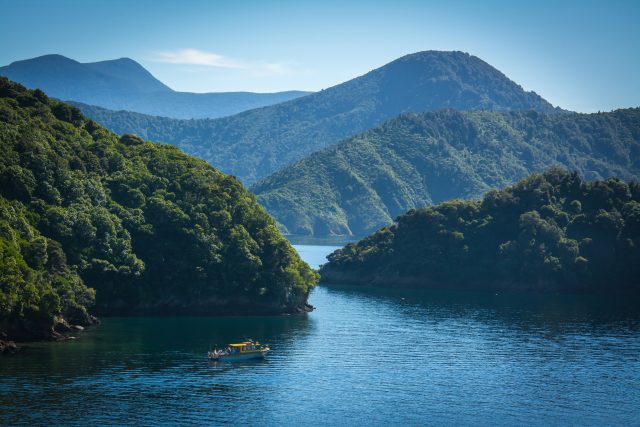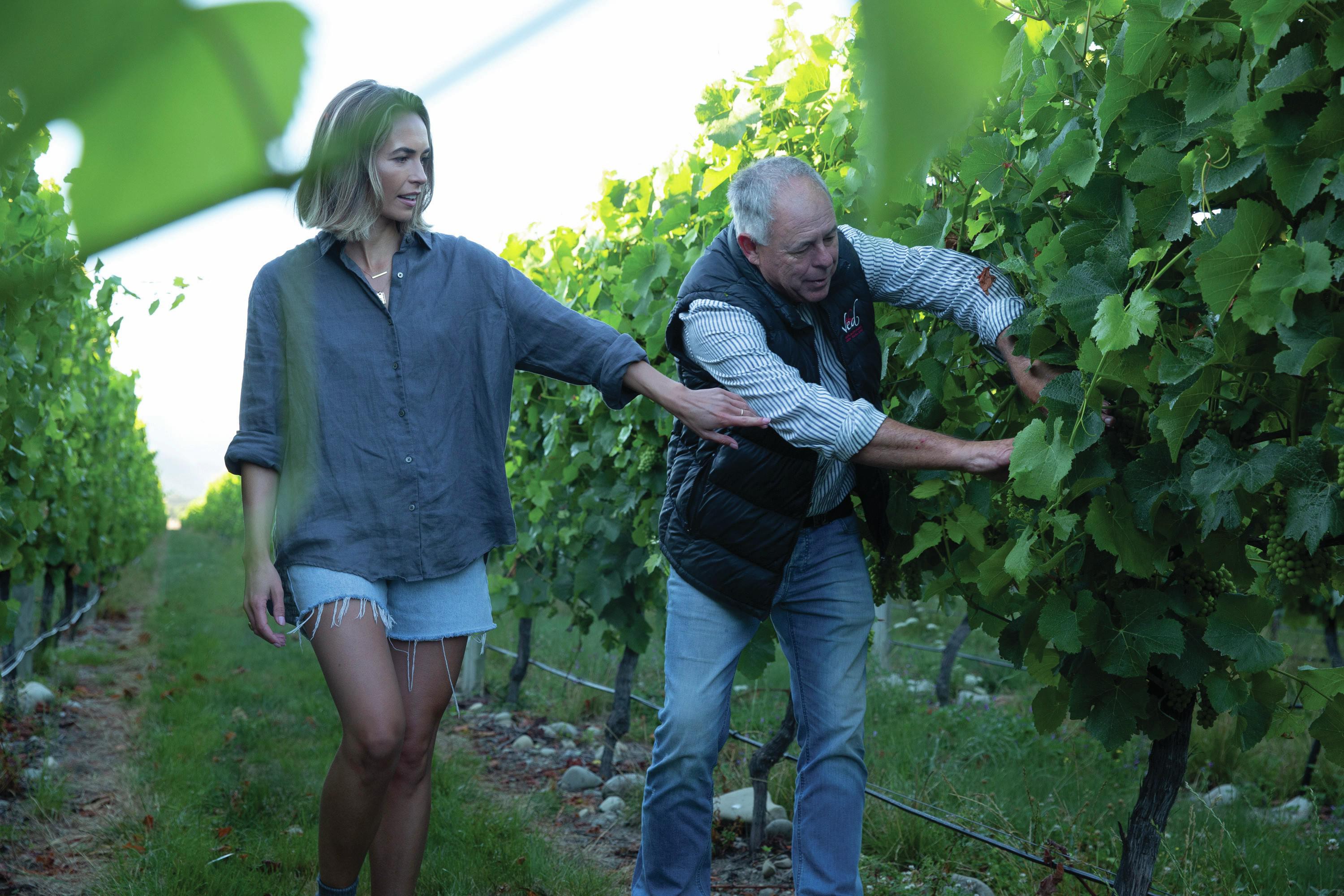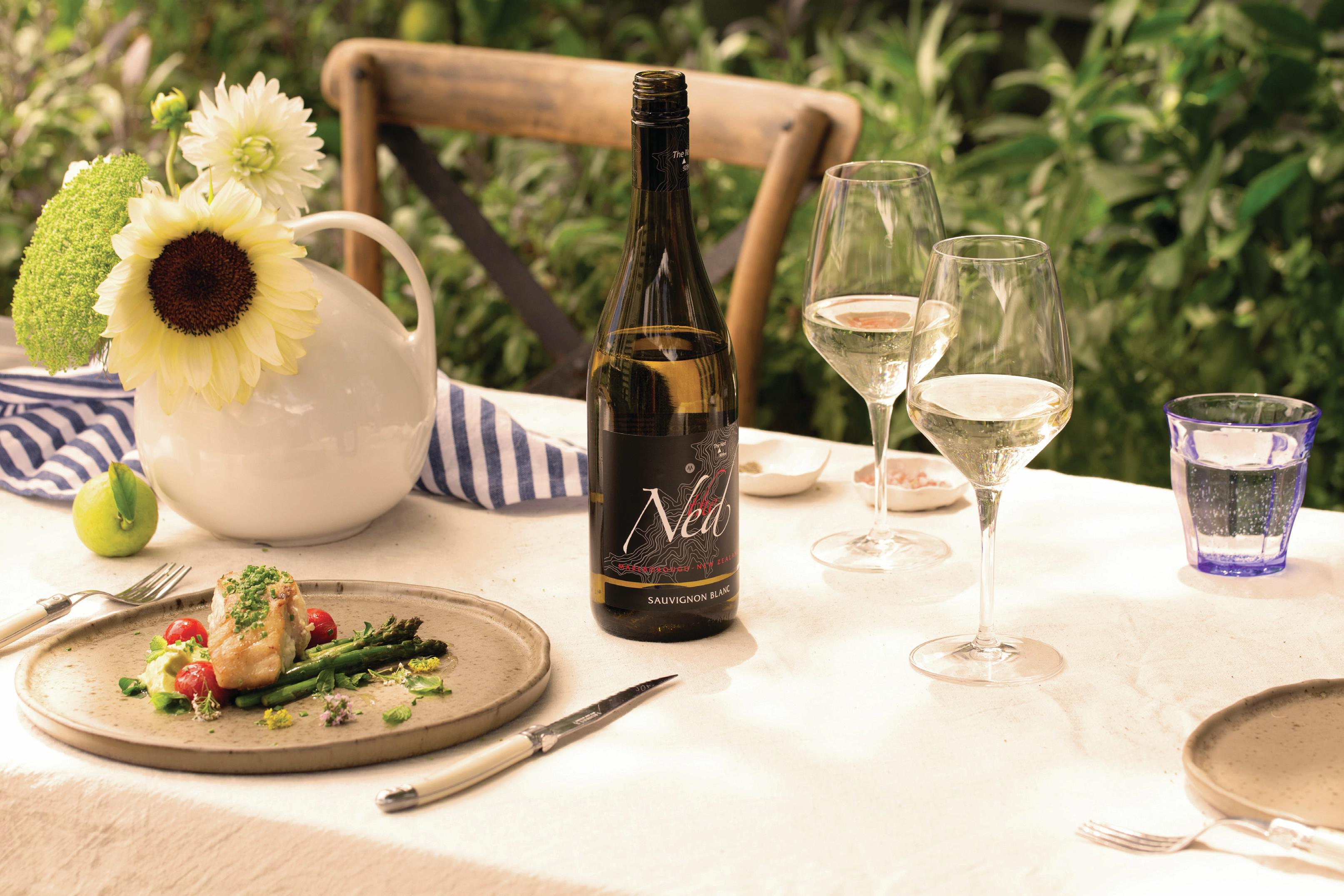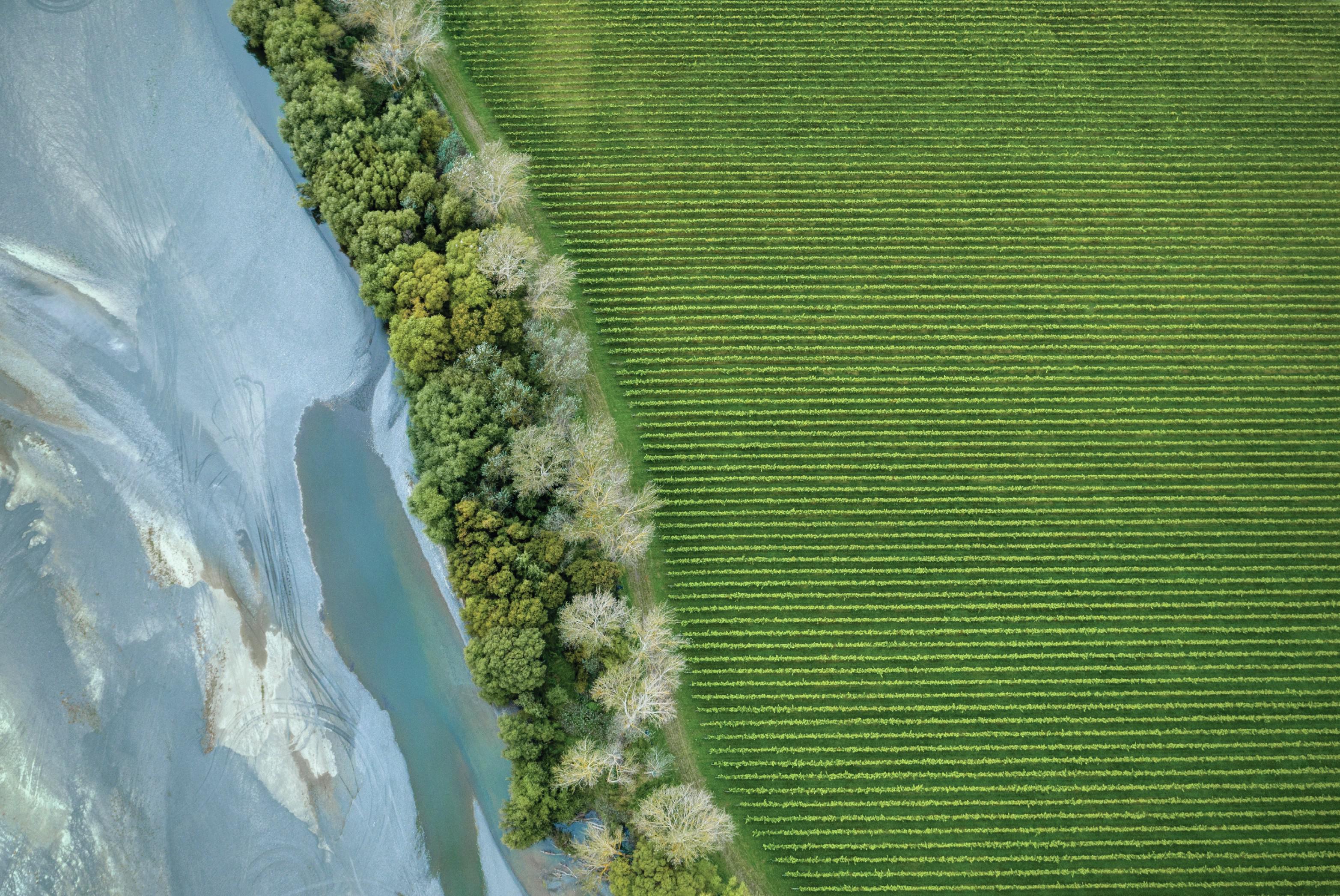This website uses cookies so that we can provide you with the best user experience possible. Cookie information is stored in your browser and performs functions such as recognising you when you return to our website and helping our team to understand which sections of the website you find most interesting and useful.
What’s next for Marlborough Sauvignon Blanc?
New Zealand’s signature grape is about to turn 50, but with climate change serving up shocks like Cyclone Gabrielle, how might the variety fare in the next half century, asks Sarah Neish.

In 1973, revellers came out in force wearing velvet bell-bottoms and clutching Harvey Wallbanger cocktails to celebrate the end of the Vietnam War. The sound of Marvin Gaye’s Let’s Get It On leaked out of Roberts radios, and moviegoers hid behind their popcorn as The Exorcist made its screen debut.
It was also the year in which the first commercial Sauvignon Blanc grapes were planted in Marlborough, then a little-known corner of New Zealand’s South Island that had hitherto been deemed “too cold” to grow grapes for winemaking.
Fast-forward 50 years and New Zealand’s wine industry is gearing up to celebrate a half century of frankly outrageous success, culminating in NZ$2.2 billion (£1.1bn) worth of international sales last year (New Zealand Wine, December 2022), thanks largely to those early vines, which took to Marlborough’s soil like ducks to water.
Of course, New Zealand had a wine trade long before growers ventured into Marlborough, but what it didn’t have was exports.
The region opened the door to a global community of New Zealand wine fans, and established watertight links with countries such as the UK, which despite being on the opposite side of the world to New Zealand snaffles up more of Marlborough’s aromatic whites per year than almost anyone else (69,891,146 litres in 2022 compared with top market US, which bought 105,844,719 litres.
That’s not to say it’s all been plain sailing during the past 50 years.
A brutally small harvest in 2021 left New Zealand’s winemakers reeling, while in February this year, Cyclone Gabrielle struck the country’s North Island, ravaging wineries, and wrecking crops. While Marlborough was largely unaffected by the crisis, local reports suggest that at least 13 hectares under vine were washed out to sea in the worst-hit coastal areas, such as Hawke’s Bay and Gisborne, after 11-metre-high waves broke over vineyards. Prime minister Chris Hipkins called Gabrielle “the worst storm to hit New Zealand this century”.
And though the disaster was contained within the North, questions have surfaced in its aftermath about whether all regions should accelerate their protective efforts against global warming.
James Shaw, climate-change minister, tellingly declared to parliament that “the lost decades we spent bickering and arguing about whether climate change was real or not, whether it was caused by humans or not, whether we should do something about it or not… we cannot put our heads in the sand when the beach is flooding. We must act now.”
Gabrielle was a spiteful wake-up call, but in many ways New Zealand’s wine industry has been ahead of the curve in cultivating a sustainable future for many years, even when compared with countries double its size, and with fatter budgets.
Its wine trade has been running largely on renewable energy for at least a decade, and extensive work is being done to safeguard grape varieties, including Sauvignon Blanc, for the next 50 years and beyond.

Sauvignon Blanc: 2.0
At the forefront of the country’s R&D efforts is Bragato Research Institute in Blenheim, Marlborough, which is working on what it calls the Sauvignon Blanc: 2.0 programme.
This intensely focused project has one goal: to increase the diversity of Sauvignon Blanc vines in New Zealand. Researchers have been working towards their target of creating 12,000 new variants of Sauvignon Blanc, which can be analysed to pinpoint which are most resilient to a changing climate.
“Most of New Zealand’s Sauvignon Blanc is just one clone. We were fortunate enough to find a genetic variety that works really well here, so it was propagated en masse across the country,” explains Dr. Darrell Lizamore from the institute, who is excited about the “plethora of materials that will be available to us” by the end of the project.
“Vines spontaneously mutate in the vineyard anyway,” Lizamore explains. “But an environmental shock affects the rate at which that mutation occurs. It makes sense because a plant can’t run away if there’s a threat, so it has to find another way to protect itself.”
Lizamore and his team are ‘stressing’ Sauvignon plant material to help it become more genetically diverse, experimenting with exposing plants to both higher and lower levels of ultraviolet light, different temperatures and salinity levels to name but a few factors.
“If the genetic code were a book, then prior to this research project we were changing things one letter at a time. Now it’s like being able to shuffle whole paragraphs around,” he explains.
Ultimately, the goal is not to create one ‘better’ plant to replace the existing dominant clone planted all over New Zealand. Instead, the team wants to end up with a selection of plants that are more equipped to withstand the changing environment.
So far, the project has succeeded in producing around 4,000 vines. “They’re very small, and are just going into pots now,” says Lizamore. “We’re already seeing changes such as looser bunch structure, which lets the air flow through better and helps with disease resistance.”
A handful of New Zealand wine producers are working closely with the Bragato Institute, with a view of planting the new vines in their estates once they are ready for transferral, though this may be some years away yet.
Patrick Materman, director of winegrowing for Villa Maria says he is “hugely supportive of the research, and excited about the anticipated benefits”, which he describes as offering “a library of adaptations to consider if environmental threats arrive”.
That being said, Marisco Vineyards, which owns Marlborough brands The Ned and Leefield Station, is conscious that the new plants will still need to translate into beautiful wines inside the bottle.
“We need to make sure that the clone material we’re receiving will be viable in the marketplace because our priority is providing the flavour profile that people around the world have come to know and love about New Zealand Sauvignon Blanc,” says winemaker Emma Marris.
“It’s about adding layers and depth to our industry, which is something us kiwis do well.”

Trading up
New Zealanders have succeeded in setting and sticking to premium prices for their wines for the past several years, spurred on by the scarcity of Sauvignon grapes in 2021, but if they are to hang onto that premium price tag, then David Babich, CEO of Babich Wines, believes that going organic has to be the next step.
“Organic wines are a great trade-up from traditional Sauvignon Blanc because the techniques and technologies involved have improved to the point where these wines really over-deliver,” he says.
“We have 10-plus-year-old organic Sauvignon Blancs that are still drinking just as well as when they were released. Organic vineyards tend to grow less vigorously and crop significantly lower than conventional vineyards due to the absence of chemical fertilisers, herbicides, and pesticides, and the greater bio-competition from weeds. As a result we often see greater fruit concentration and depth of flavour.”
Babich says UK consumers especially are keen to explore organic Sauvignon. “They’re looking for wines with a greater sense of provenance, history and character, and organic wines have that in spades.” Babich Wines has seen global sales of its organic range rocket by almost 250% over the past five years, and by 50% from 2021 to 2022 alone.
“The UK accounts for almost half of those sales,” Babich adds.

Others in the trade believe making Sauvignon Blanc more accessible to a wider range of consumers is the way to keep sales climbing. And with the growing demand for lower-alcohol wines, many producers are accelerating their efforts in this space. But what can New Zealand bring to the category that other countries perhaps can’t?
“With its pure, fruit-driven wine styles that carry fresh natural acidity, New Zealand is perfectly positioned to make exceptional lighter-in-alcohol wines,” says Patrick Materman of Villa Maria, which makes a Lighter Sauvignon Blanc and a Lighter Rosé.
“Aromatic intensity and flavour expression are well established even at lower grape-sugar levels, allowing earlier harvest and naturally lower ABV levels in the resulting wines.”
Yealands, Stoneleigh, Brancott and Wither Hills all also make ‘lighter’ Sauvignon Blancs, with alcohol levels at around the 9%-9.5% ABV mark. But the lower-alcohol arena is not just for Sauvignon Blanc.
In 2014 New Zealand Winegrowers established a seven-year ‘Lighter Wines’ partnership with the government’s Ministry for Primary Industries. The collaboration set out to establish New Zealand as a global leader in premium lower-alcohol wines, with impressive results in both white and red varieties.
“Reducing the alcohol content of our wines is a major part of our thinking, but I prefer to do this through vineyard management rather than winery interventions,” says Dave Sutton, winemaker for Te Kano in Central Otago, which is exploring making lighter Pinots.
“The aim to is achieve naturally lower alcohols by reducing the photosynthetic potential of the vine – through canopy removal or managed deficit irrigation. The tricky part is making sure our wine style still has concentred fruit flavours and ripe supple tannin, with enough alcohol to give the body and richness that are hallmarks of Otago Pinot.”
Not everyone is prepared to throw themselves head first into the low-alcohol realm. Some New Zealand wineries are choosing to hedge their bets and embrace the ‘mid-strength’ world instead.
“Historically, most of our wines have been quite full-bodied,” says Chris Scott, chief winemaker for Church Road, which specialises in Hawke’s Bay Syrah and Chardonnay. “But we have a strong maritime influence that moderates day and night time temperatures, and which makes us well-placed for crafting lower alcohol wines.”
Scott has been exploring some “elegant, focused styles, unencumbered by new oak”, including a Chardonnay, Pinot Gris and a rosé in its Gwen range, where alcohol levels range from 11% to 12.5% ABV. Scott insists that these lighter expressions are “as a consequence of the stylistic aim, rather than an ambition to make low-alcohol wine”.
The decision over whether or not to pursue a lighter wine range can often hinge on practicalities such as the availability of grapes rather than a producer’s winemaking philosophy. Marisco Vineyards, for example, which has made a number of wines using different alcohol-reduction strategies over the past few growing seasons, has never released them commercially.
“The ever-increasing demand for our regular ABV wine is such that there has never been surplus fruit available to support a new low-alcohol range,” Matt Mitchell, general manager, explains. “We are, however, very aware of how much interest this category is generating and have a number of buyers talking to us about what we could do in this space.”

Plan B
One lesson New Zealanders learned the hard way through 2021’s diminished Sauvignon harvest was to avoid putting all its eggs in one basket. For this reason, producers have been focusing on alternative white varieties as an investment strategy.
Enter Albariño, stage right.
While total plantings of the variety are still low (58ha compared with Sauvignon Blanc’s 26,559ha), they doubled in the five years between 2015 and 2021, and there’s a palpable buzz around the grape.
“In New Zealand, Albariño gives a linear, lip-smackingly refreshing style of wine,” says Stephen Wong MW, who lives and works in Wellington. “Wineries are starting to offer Albariño as an alternative to Sauvignon Blanc, without the punchy herbaceous character. That’s where we find its sweet spot.”
One such producer is the forward-thinking Villa Maria. “Albariño plays a small but important role for us,” Jessica Bell, global fine wine manager, said in a recent webinar on the subject.
“It’s getting big domestically but we are also seeing interest from the UK and Ireland, where we’re getting a really strong response.”
According to Anthony Walkenhorst of Yealands, which recently released its first single-vineyard Albariño, location is everything.
“Planting in the best sites will be critical for Albariño to reach its full potential in New Zealand. Coastal sites look to be a great option.”
Perhaps the biggest sign of a trend taking off is when producers who don’t make wine from a variety still sing its praises from the rooftops. “The Albariños I’ve tasted from New Zealand all have distinctive purity and explosive aromatics, and they are exciting,” says Te Kano’s Dave Sutton, who is “keen to see more winemakers experimenting with diverse barrel programmes (both acacia and oak) and lees contact for Albariño pushing the boundaries a little as the vines age.”
Similarly, Church Road, for which Chardonnay is the mainstay, is nonetheless keeping one eye on Albariño.
“There are some great examples coming through, with the best wines exhibiting good concentration and weight, balanced with a lovely slatey mineral drive on the palate,” says chief winemaker Chris Scott.
So while the last 50 years were transformational for New Zealand’s wine trade, the next half century will see it accelerate at no slower a pace.
We will witness an impassioned drive for the diversification of Sauvignon Blanc vines, as well as more organic and lower-alcohol expressions coming to market, and a stronger presence of alternative white varieties such as Albariño as both a safety buffer and display of the breadth of winemakers’ skills.

